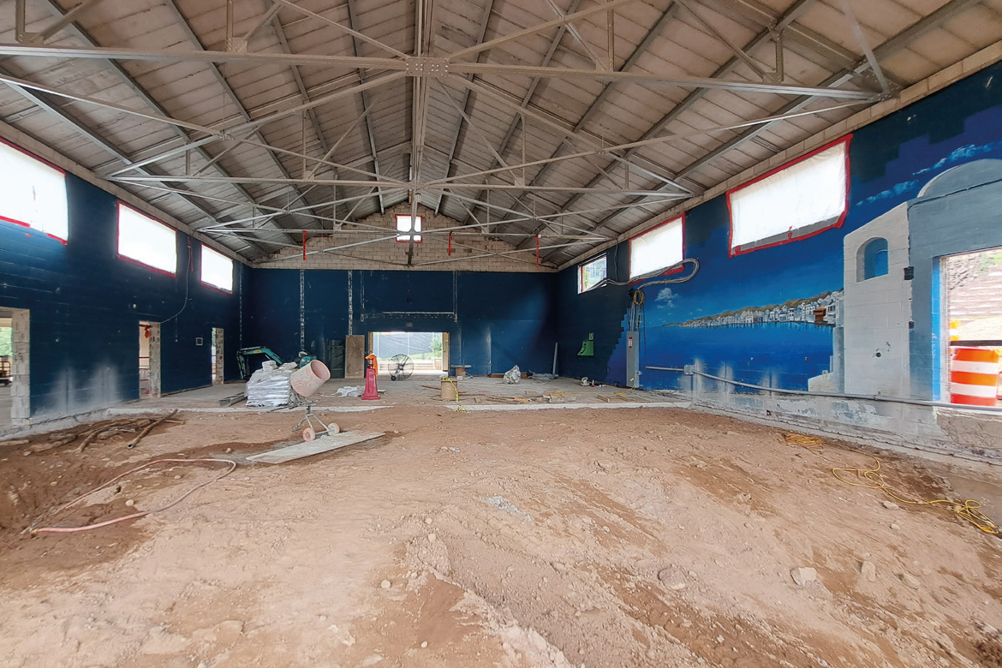Michael Calderone is one of a bunch of lucky drama teachers whose theatre facilities were granted a renovation. He shares an insight into the process and offers tips for those who might find themselves in a similar situation.

Whose theatre facility does not need an upgrade? Statistically speaking, the average British drama teacher is likely to see some kind of renovation to their school's theatre during their career. This statistic is similar for American independent schools and proved true where I teach at Hopkins School in New Haven, Connecticut.
When it is your turn and, depending on the size and scope of your project, you will most likely sit on a planning committee with the heavy hitters of your organisation. Included in most of our meetings at Hopkins were the school's chief operation officer, the lead architect team, members of the school's board of trustees, the campus facilities director, and the chair of the arts department.
For all of their concerns and expertise, none of these folks knew more of the seasonal, monthly, and daily goings on in the theatre than my colleague and me: the drama directors. Our role, and your role if you sit on a renovation committee like this, is vitally important. With all of these chefs in the proverbial kitchen, here are some of your responsibilities when it's time to start cooking!
Stand for function over finances
Often, necessities are rationalised away due to budget constraints and construction laws. For our project, a new elevator had to be installed according to the Americans with Disabilities Act (ADA). Our architect, in an attempt to comply with the law and save money, decided that the elevator would serve to transport audiences to the auditorium and the student actors from the first-floor dressing rooms to the second-floor stage level. In his mind, this removed the need for providing a costly backstage set of stairs.
We successfully explained that, through our experience, not all student actors are ready at the same time, how some often leave items in the dressing room, and our fear of a cast of twenty-five students stuck in a broken elevator five minutes before curtain! Additionally, without our input, actors in costume would be riding the elevator with tardy audience members. As a result, our new building has a private backstage staircase from the dressing rooms to the stage level, and an elevator publicly located for the audience.
Advocate for sense over style
In an early iteration of our renovation, members of our team were enamoured with the idea of natural light in the auditorium and requested that the designs include windows around the audience. While we knew the suggestion came from an aesthetic perspective, meant to impress the occasional school visitor, donor, or prospective student, we in the theatre department offered what all theatre folk might consider common sense. We reminded the team that, while performances were mostly at night, we hang and focus lights during the day and require total light control. Furthermore, we have occasional matinee performances when the light would need to be blocked out. Thankfully, the committee agreed to not have windows in our performance space.
Safety is paramount
Our theatre's former lighting grid could only be accessed by ladder or portable lift. As such, students rarely hung, focused or coloured lights, leaving them out of an interesting and crucial part of a production's tech load. Catwalks provide some safety but led to a disastrous situation at a local state college where a student fell and was seriously injured. We lobbied for, and won, a tension grid system upon which students can walk and work above the auditorium without danger of falling or dropping heavy equipment onto those below.
Get it right
Your new build or renovation could be the one chance you get to improve your space for generations of students to come; therefore, advocate now for what you need. For years, our musicals orchestra was either stuffed behind the actors on stage or squeezed between the stage and the audience. Neither situation was ideal. A sub-stage orchestra pit would add tens of thousands of dollars to our budget but would make the theatre a true performance space.
Just when we thought our drama teacher voices were being drowned out by concerns of money, planning, and timeline, we were saved by the president of the board of trustees. He heard our concerns and thankfully spoke up. Hopkins School recently closed Cabaret! – the first musical in our state-of-the-art Academic and Performing Arts Center, complete with a sub-stage orchestra pit!
A renovation, whether big or small, is most likely in your theatre's future. Be ready to have your voice heard.
